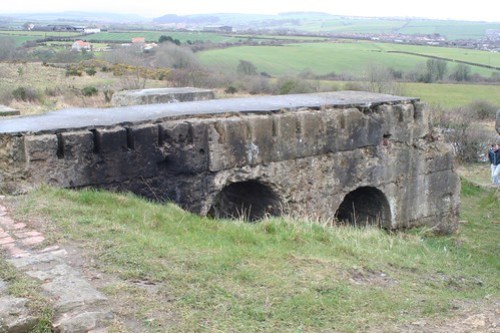A long overdue return with a decent torch and decent camera.
The Kettleness portal is looking much closer to collapse than ever before, with a large amount of soil falling through from above and large stones hanging.
Although once inside this end of the tunnel constructed from large blocks still looks very solid, although there was some bowing of the walls and collapsed layers of brick in certain areas towards the brick-built Sandsend end.
There are four ventilation shafts along the length of the tunnel, which seem to come in large and small varieties. All are capped, with fallen bricks and water cascading down them.
There are two small side tunnels used in construction, which run from the bottom of air shafts, although both looked extremely muddy due to the water from the shafts so we didn’t venture down them.
There are some impressive mineral formations lining the walls of the tunnel.
Also stalactites growing from the roof.
Dozens of alcoves line the full length of the tunnel, with the occasional bit of amusing graffiti.
Exiting at the Sandsend portal is a small climb, although once you’re jumped over the wall there’s no easy way to go back.
 Show on map
Show on map






































































